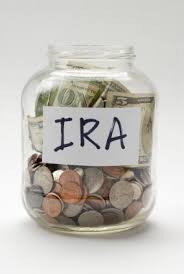Individual Retirement Accounts (IRA’s) are generally associated with later in life as the name implies. The rules for beneficiaries of IRAs are different and will normally have income tax consequences. So as a beneficiary it is important to know these rules in advance.
If the beneficiary is the spouse of the deceased they have more flexibility with an inherited IRA. They can either name themselves as the account owner or roll it over into their own IRA account. This allows the surviving spouse to postpone taking required minimum distributions (RMD’s) if they have not reached age 70 ½. A non-spouse beneficiary cannot take advantage of these benefits.
When someone inherits an IRA, they can withdraw as much of the account as they want as long as the RMD rules are met. If the inherited account is a traditional IRA the beneficiary will have to pay income taxes on those distributions. If a Roth IRA is inherited than the beneficiary can withdraw the funds tax free if the owner of the account held it for at least five years.
There are different methods for taking RMD’s, by far the most common is over the life expectancy of the beneficiary using IRS tables. In most cases the non-spouse beneficiary will have until December 31st of the year following the owner’s death to take their first RMD.
Whichever method is used, it is important that RMD’s are taken, as the failure to do so can subject the beneficiary to a 50 percent penalty on the amount that should have been withdrawn.




